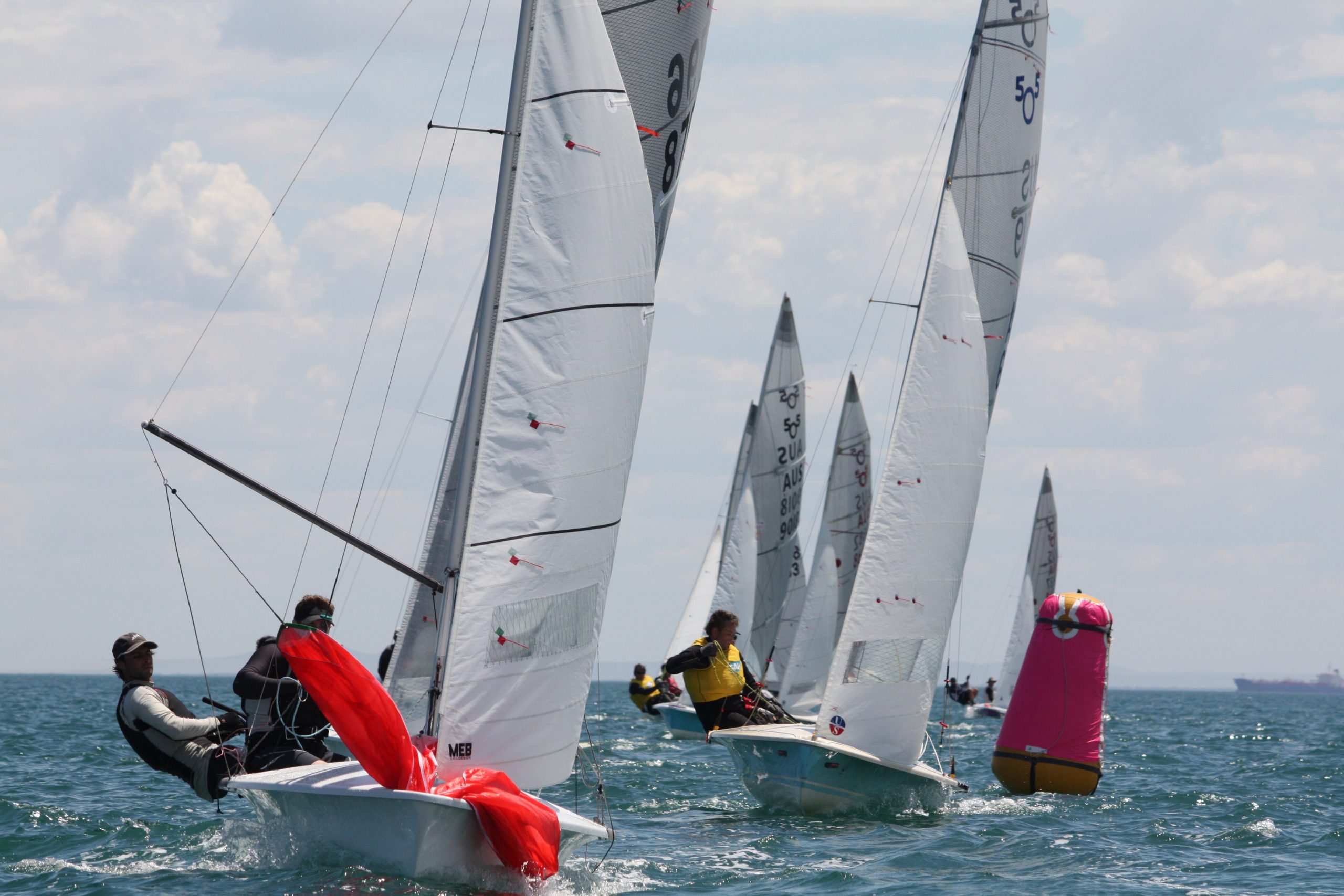

I have copied below excerpts from an interview I did with Mark Bulka on Mark Approach and Rounding Considerations. Mark has won World, National and State championships in a number of different classes ranging from single handed monohulls through to catamarans.
He has also competed in skiffs, sports boats and run Ocean racing campaigns. His experiences and thousands of mark roundings have given him a unique insight into what it takes to effectively carry out this manoeuvre.
Brett: When approaching the weather mark what sort of things do you consider?
Mark: It was things not to do, don’t ever get up on that starboard lay line.
Ridiculous amounts of bad air it doesn’t matter how much you overlay, someone’s always going to come up and overlay a little bit more and wreck your run.
When we were coming up to the starboard lay line, it doesn’t matter what it knocks like, we go back and you’ll watch people who’ll keep going to the starboard lay line and you’ll go, “We may struggle later on getting to the lineup but I guarantee we’ll be 100 meters, 50 meters in front of that guy that just went across our stern or just went across our bow and just decided to go into the lay line stack.
On the port lay line, sure, there may not be a hole and you may have to do some massive ducks. But if you’re that far back 80% of the time there’ll be a hole.
Brett: How would you normally approach a weather mark if you find yourself well back in the mob in a big fleet?
Mark: If you’re back in the fleet obviously it’s pretty hard. There’s no magic trick all the way back up, but there are some things you can do that can pick up big numbers of boats.
One, don’t go to the starboard lay line. That will always lose you ground, I have never seen a starboard lay line work.
Perhaps if you’re on an A class cat which is accelerating. It accelerates by 50% of its speed by overlaying. In a boat like an Etchells which doesn’t actually accelerate at all you’re just guaranteed to lose heaps of ground
If you’re looking for a big pick up of places, the port lay line is actually your best chance.
You can pick up 20 boats in a solid Etchells fleet just coming in on the port lay line. You’ve just got to be prepared to take a big duck at the end if there’s no hole.
You know it’s a risk but it works 80% of the time. If it’s a really bunched up fleet and there’s no holes, you’ve got to be prepared to go back early.
Brett: We’re coming down to the leeward gate, how far before the leeward mark do you start planning?
Mark: I’m always chatting. On a one man boat, it’s going through my head all the time. The decision on which mark can change within 30 seconds. You could be, “Yeah, we’re going starboard, starboard, starboard. No hang on. No, we’re flipping across to the port mark.”
You’ve got to be thinking which side of the course was favoured. Are all the boats going that way, is there a big bunch all about to go round that starboard mark?
Brett: What are some considerations immediately after you have rounded the leeward mark?
Mark: Are we just going to come around right on their stern, and be forced to tack off where we don’t want to go anyway?
Do we go around the port mark and then go up 100 meters and then tack back onto starboard? There’s no one rule for every situation.
And another thing is it’s never good to actually tack straight back under the oncoming spinnakers and boats. So you’ve kind of got to punch out a little bit as well.
Do we sit there right on the stern of someone who’s just gone around? Are they a high pointing boat? Is there only one boat in front? Can we point higher than that boat?
So we come around the mark, go high mode, wear some pain and then go the correct way right from the word go. 10 boats have just gone around there and the opportunities are pretty slim so we take the port mark for a bit of clear air.


